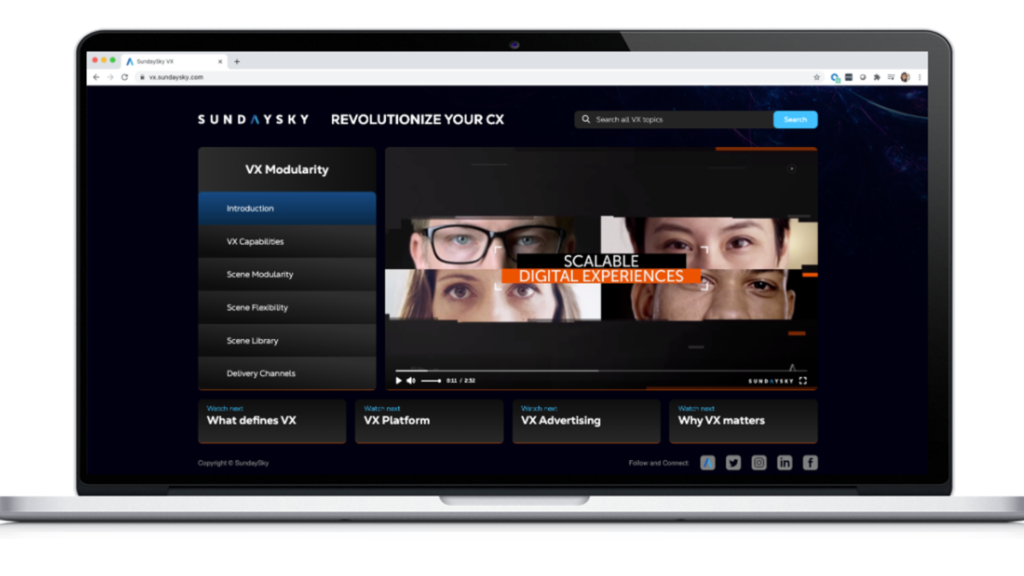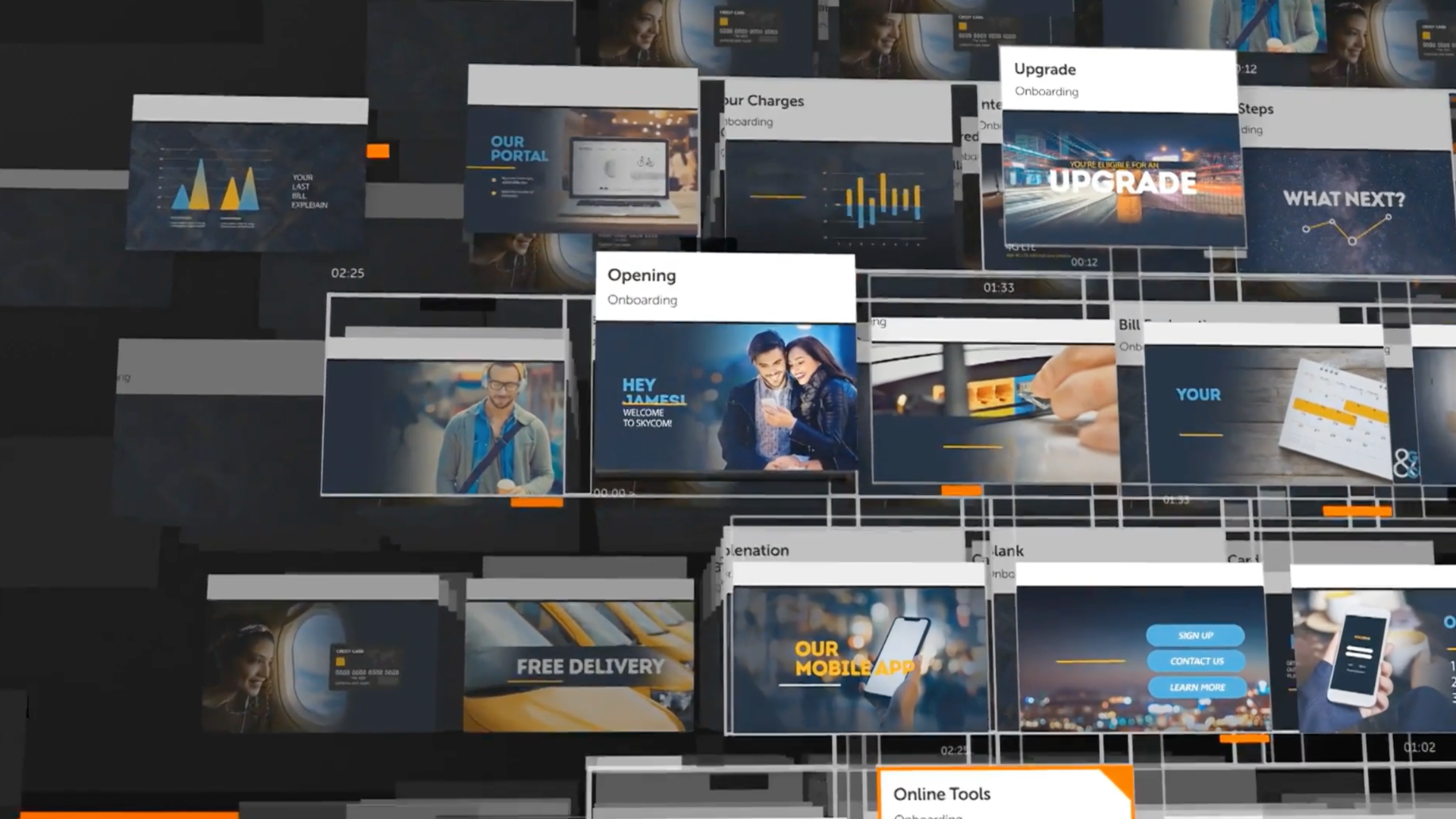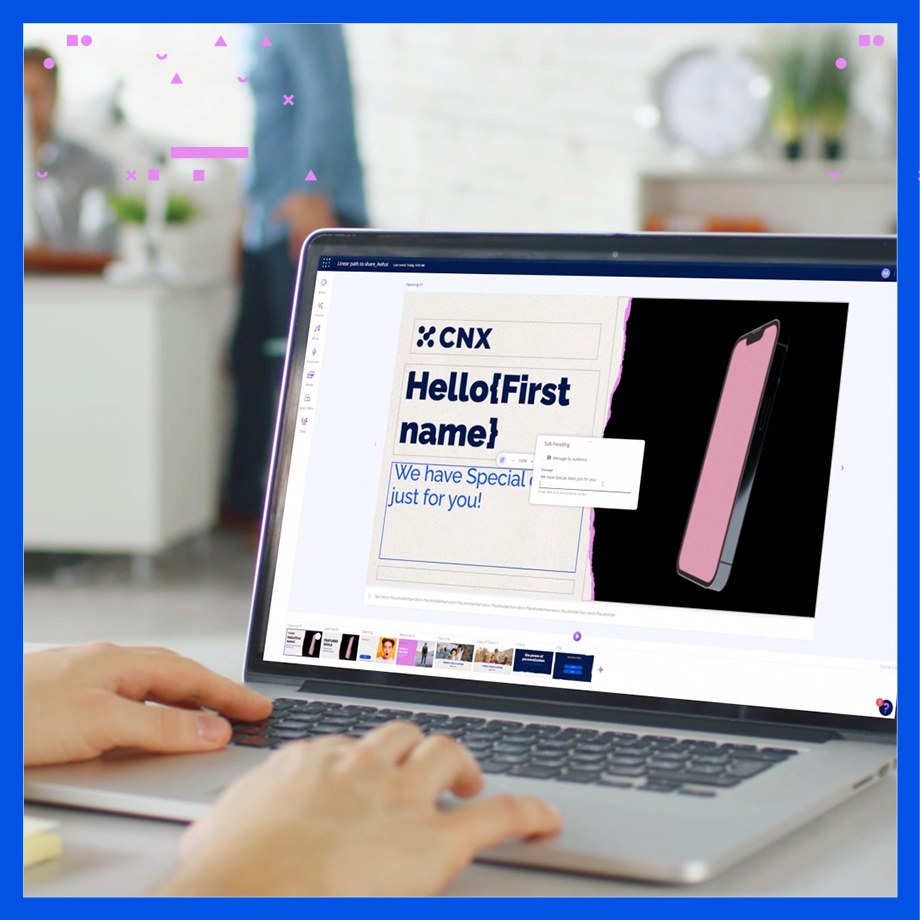Believing you don’t have access to the right data, assets, or time to quickly create and deliver engaging digital experiences to customers is a common misconception among marketers and CX leaders today. Another misconception? Thinking that a video scene can only be used in one specific video experience and can’t be updated or reused again… and again.
SundaySky takes an agile, iterative approach to launch our customers’ video-powered experiences first, then works to evolve and expand them over time making more use of video scenes as sharable and modular building blocks. The wide range of video solutions we offer (dynamic, interactive, contextual, and individualized) enables the creation of purposeful, outcome-driven content that’s relevant to each viewer with or without data. You’re probably thinking: “OK, but what does all of that even mean?”
“…create purposeful, outcome-driven content that’s relevant to each viewer with or without data available.”
As consumers, we know how it feels when we’re faced with complex information such as changes to our monthly phone bill, new healthcare benefits, instructions to self-install internet, and so on. So at SundaySky, we know it’s critical to create engaging educational content to explain to our customers and prospects what we do, how we do it, and why it’s valuable. We created the Sundaysky VX Explainer, a robust video-powered experience about video-powered experiences. (See it for yourself at vx.sundaysky.com).
This year at SundaySky’s virtual summit, I had the chance to demonstrate our VX Explainer, exposing our phased, agile, and iterative approach to building and launching video experiences. This robust experience showcased how we enable content velocity and creative flexibility to update scenes, build new stories, and deepen viewer relevancy over time, elevating our capabilities in scalability, effectiveness, and efficiencies. Here’s a modular scene that explains “scene modularity” from one of the videos we created about how VX works:
As we do with every experience, we started with a framework; how we define the strategy. We mapped out all of the topics (scenes) we wanted to potentially include in our VX Explainer videos, then assigned the scenes to stories. Each story is a sequence of scenes, or a narrative. So by creating a robust scene library with multiple topics, the possibilities of telling unique purposeful stories are endless.
“…by creating a robust scene library with multiple topics, the possibilities of telling unique purposeful stories are endless.”
Once the scenes were planned, we wanted to go live with something fast so we developed three educational stories as contextual videos, meaning no logic or data to drive individualization just yet. Simply, a basic landing page to host the videos we’d send to prospects and customers, enabling us to learn and optimize the content in the next phase.

Like you, we want our messages to resonate with each viewer on a more personal level to help them understand the content and relate to it. So to achieve an emotional connection, we evolved the content by adding a layer of individualization into some of the scenes.
Individualization starts with a first name, but we wanted to make the content truly tailored to the viewer. We created audience segmentation based on industry—telecom, retail, healthcare, etc.— and the viewer’s role. By including these variations in the messaging, we can tell a more compelling story around why VX is valuable for your industry and how you can use it. The opening scene is a pretty straightforward piece of content, but its architecture is complex, built with the intent to maximize scene reuse across different stories.
“…built with intent to maximize scene reuse across different stories.”
In our Builder, the same opening scene can be dynamically built from a static scene with no logic or variations, to individualized after implementing data and logic. Here’s a preview of what that looks like:
The individualized scene includes the first name of the viewer as well as acknowledgment of their role and industry, making it much more relevant and relatable. And since this scene is shared across different stories, the visuals and narration also changed to highlight the main topic in the video.
One of the greatest values of our platform is the ability to repurpose scenes out of the existing scene library. Since so much great content is developed, we want to maximize the potential of our scene library the same way we do for our customers, so we started creating more stories out of existing scenes. We pick the scenes that make the most sense in new stories and adjust the content slightly to create a new cohesive message. The videos are built with placeholders, so it’s easy to make changes to on-screen text, narration, and images to give the scene a new meaning and purpose.
“We want to maximize the potential of our scene library the same way we do for our customers.”
But why stop there? We wanted to give the viewer complete control to tailor their own videos and navigate through this wonderful content that we created. So for the final phase, we built an interactive video-powered experience, where the viewer is asked two questions: what’s your role? and what’s your industry? They then receive their individualized VX in real-time and navigate to other video topics available to them on the page. Check it out: vx.sundaysky.com
As you think about enhancing your own CX strategy, remember that a robust scene library can be a powerful tool to create endless video-powered experiences fast and at scale. Further, the wide range of video experiences we activate (contextual, individualized, dynamic, and interactive), serves a unique opportunity to deliver the right content to the right viewer at the right time in the most appropriate channel, and it doesn’t even have to include data. Lastly, repurposing scenes can help build new content to achieve new goals, quickly and efficiently.







